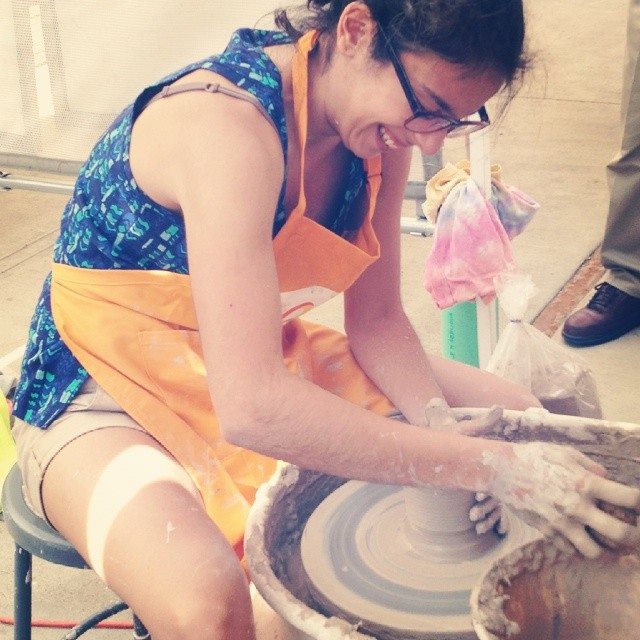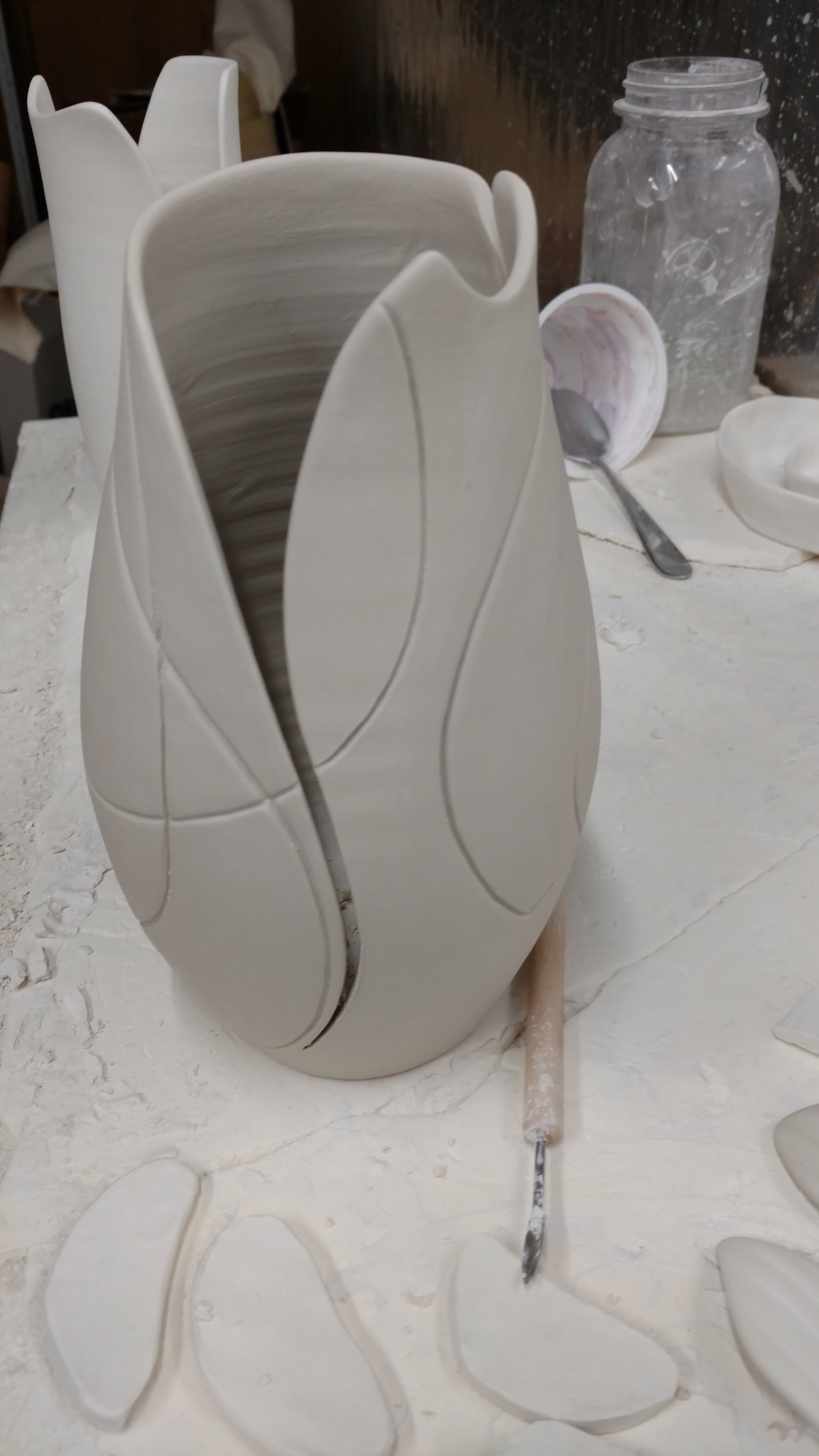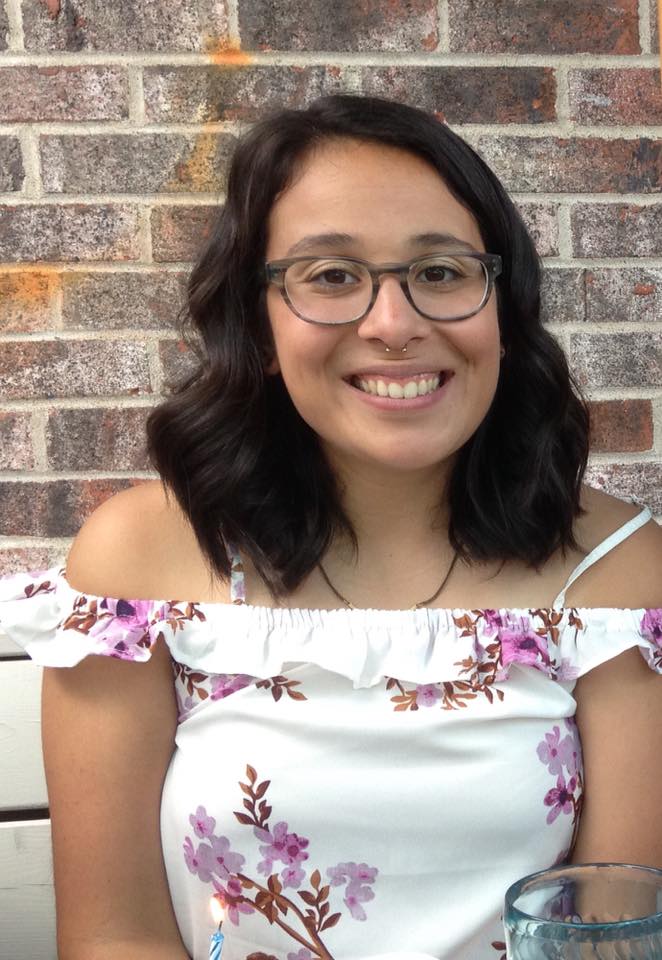Meet Samantha Longley, a Minneapolis-based ceramic artist who subverts traditional pottery with unique, fluid flourishes. Samantha attended a liberal arts college in St. Paul, originally for painting, but discovered a "profound relationship with clay" in her second year. She now lives in Brooklyn Park, where she also houses her studio. Read more after the break!
Based on your artist statement, your relationship to your craft is very spiritual (not necessarily in a religious way, but in your connection to nature, the universe). Where do you find the intersection of ceramics and this spirituality?
It's interesting that I chose ceramics, something so tactile and messy, to talk about something transcendent- but I actually think it is a perfect marriage. Being a spiritual person isn't always about transcending and getting out of your body, or out of this world in order to contact something pure; I believe the pure spirit, that flow of the divine is actually within and all around right here, right now, indwelling and constantly colliding with this world, in the nitty gritty, the unexpected and the mundane.
I think this physicality can be seen as something to be escaped from most of the time instead of embraced, which is why clay is my muse. The process is not glorious; it's messy, frustrating, very physically involved, and rarely works the first time- but it creates a space for me to confront and embrace all my humanness. It is an expansion of myself in both directions; the somatic involvement pioneers the space for my spirit to open as well (sort of like yoga). It is a beautiful, mysterious, intriguing, and seemingly contrasting harmonization that I constantly seek and find a lot in my studio (the meeting of physical and spiritual that I talk about in my statement) and I get to provide a literal picture for others: infusing dirt with energy and idea and life. Ceramics is how I practice this harmonization and attempt to diverge from my regular dualistic living.
How do you subvert traditional forms (cups, pots, etc.) to convey these feelings?
Perfection is not something I strive for in my life or my forms. I have often heard adjectives like "wonky" or "smushed" or "distorted" to describe my work, which I fully embrace. There is a Japanese world view called "wabi sabi" which can be, very simply, translated as "beauty in imperfection, humility and impermanence", but it is much more than that; it is an entire way of being. The aesthetic that tries to contain its essence really challenges western notions of glamour, showiness and symmetry; Wabi Sabi ceramics can feature cracks, distortions, and asymmetry and yet, they are treasured and appreciated for their imperfections. My pots don't look like typical, traditional pottery that is found, which is how I have found a home in the Wabi Sabi aesthetic and mindset. My work is intentionally distorted, sliced, carved and crumpled in hopes of being more true to life which is full of movement, ebbs and flows, imperfections, and is absolutely beautiful when it humbly embraces those things.
What’s your process usually like? Do you have a specific shape in mind when starting a piece, or do you let it form as you work?
With my unique forms especially, it is hard to picture exactly what the outcome will be. For these functional forms, I begin with the right amount of clay (about 1 lb for a mug or tumbler), then start by throwing a cylinder on the wheel. When I get close to completing the base object, I sort of stretch it to its limit and hold the top of the form while the wheel is still spinning; this causes the clay to twist and create a lovely soft movement that is unique to every piece; it sort of looks like a wave or moving piece of fabric. Then, if I did it right, the clay will hold its form and it will be frozen in movement forevermore.
With my newer, more sculptural works that I cut into, I usually begin with an idea and a sketch, but the beauty of ceramics is that you can't always control it. Sometimes it will take you down a different path, and I like to ride that wave. It's good to have a starting place, but if I am trying to follow a 2-D sketch exactly, I don't feel like I'm being true to the nature of the medium and the movement I’m trying to capture; like trying to carve a line around a 3-D form. How to follow a flow around its curves is something you figure out in the moment.
What is it like to be a Minneapolis-based artist? What makes this community unique?
Being an Minneapolis artist is the best! I love making connections with fellow artists through sales and arts events- it's actually really easy to do since these folks are some of the nicest, most open people I know. I think what makes this community unique is that it feels like a community, not a competition. As creatives, we have an instinctively deeper understanding of one another and can easily bond over the joys and hardships of working as an artist. All of the makers I've met seem so open to connection and are very genuine people; it has helped me to open up and feel proud of my work and comfortable just as myself. I have been so encouraged and embraced by fellow artists in the community, even while working out of a secluded home studio. I'm so proud of this community, the creative, earnest, and beautiful work they make; I love that it is my home!
Where do you see your practice going in the future? Do you have any dream projects you’d like to work on?
My hope is to become more and more committed to my work and practice and to move into a larger studio space outside of my home within the next few years. I don't have a clear picture of what I imagine for my future, but I don't let that hinder me from progressing; just as my work begins with a small idea, then grows and evolves and leads me on, so do my dreams.
Who are some of the other local makers whose work you’re really excited about?
I love to see what other ceramic artists are doing around me, how they’re being innovative and original within the same medium. I am intrigued by Brett Fruend's extravagant aesthetic exploration in function and just wish I could reach through screens and touch his crystal formation cups forever. I'm also a huge fan (and collector) of Adam Gruetzmacher's work (note from ed. - see our interview with Adam here). It always seems fresh, like he's constantly innovating and never bored with the process. It's really inspiring to me. Autumn Higgins brings me into those quiet, sweet everyday moments with her gorgeously illustrated pots, and I am always inspired by Liz Pechacek's fascination and play with form.
On a 2D note, I am also really digging Kelsey Oseid's (Kelzuki) fantastic illustrations lately! I love having those beautiful depictions of nature around; they make me so happy and I could look at them all day! I also enjoy Michelle Brusegaard's (MBMB) frankness and play with design over anything and everything. Before I leave the house I am usually wearing my edgy witch's finger power necklace by Betty Jager (3 Jag Design) and/or some beautiful lichen filled jewelry by Sudify. I am a proud owner of a lot of really superior local art and goods.
See Samantha Longley's work in Winterland, and visit her website here!






